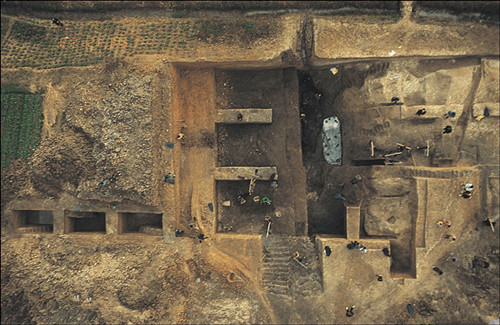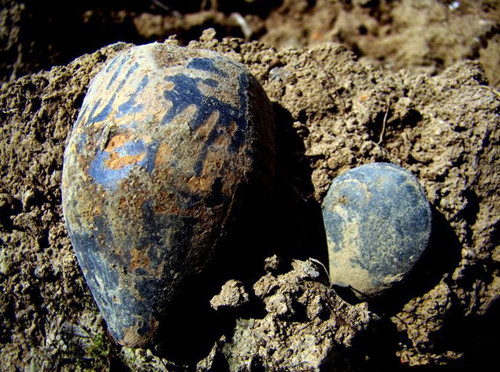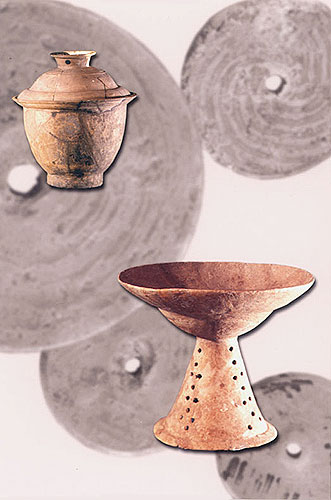Qujialing Site
- Source: Hubei Provincial People's Government
- 08/17/2022 11:10
- 0 296


Location: Jingshan County, Hubei Province
Type: Archaeological site of the Neolithic Age
Period: 3,000-2,600 BC
Excavated from 1954 to 1989
Significance: The Qujialing Culture is named after the site. The find plays an important role in understanding the prehistoric cultures of the middle reaches of the Yangtze River and the Jianghan Plain.

Pottery zeng (utensil for steaming rice, etc.) with lid: vessel for steaming and boiling food (left-up, total height 35 cm); Hollowed-out pottery dou (bowl with high stem and spreading foot) with the trumpet-shaped, circular leg: food container (right-bottom, height 17 cm); Pottery wheel for spinning: spinning tool (in the background, the smallest diameter is 3.5 cm)
Introduction
Neolithic relics excavated in the region from the Qujialing Culture show that there were people living in Qujialing of Jingshan County, Hubei Province about 5,000 years ago.
Qujialing Site, covering an area of about 400,000 square meters, dates back to the later period of the Neolithic Age. The area of the ruins is 350 meters long and 320 meters wide. Most parts of the ruins are in good condition. Among the cultural relics of ancient houses, storage pits and tombs, painted pottery unearthed here is the most famous. Archaeologist also found a lot of production tools and rice chaffs, indicating the development of agriculture in this period. The development of agriculture and the worship of Taozu indicate that the Qujialing Site entered the patrilineal clan society. The Qujialing Culture is named after the site.